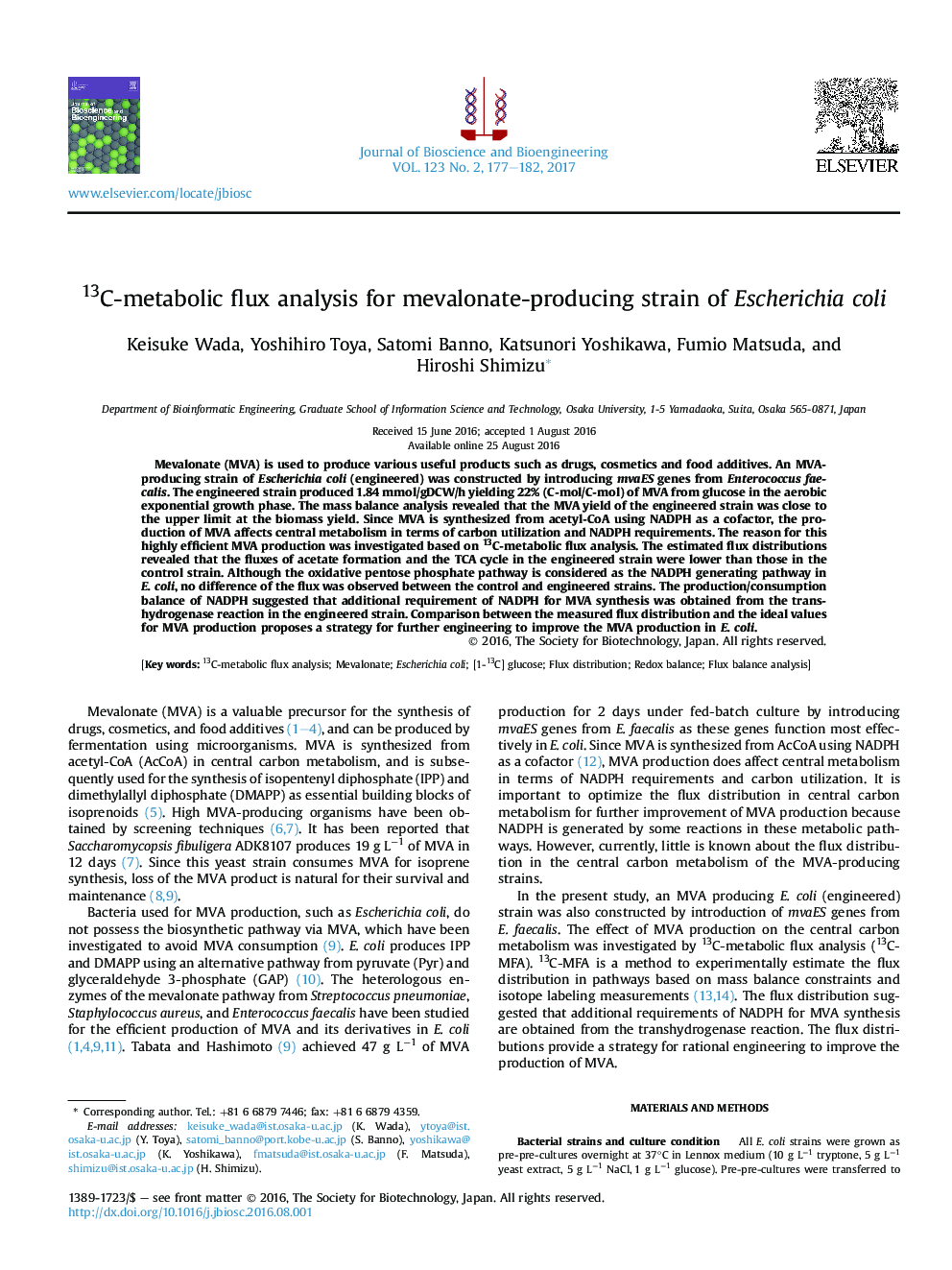| Article ID | Journal | Published Year | Pages | File Type |
|---|---|---|---|---|
| 4753425 | Journal of Bioscience and Bioengineering | 2017 | 6 Pages |
â¢Mevalonate (MVA) production in Escherichia coli having mvaES from Enterococcus faecalis was evaluated.â¢Metabolic fluxes of control and MVA-producing strains were revealed by 13C-labeling.â¢There were no significant differences in the fluxes of the upstream of acetyl-CoA.â¢Fluxes of TCA cycle and acetate formation decreased in the MVA-producing strain.â¢Fluxes suggested NADPH for MVA synthesis was obtained from transhydrogenase reaction.
Mevalonate (MVA) is used to produce various useful products such as drugs, cosmetics and food additives. An MVA-producing strain of Escherichia coli (engineered) was constructed by introducing mvaES genes from Enterococcus faecalis. The engineered strain produced 1.84 mmol/gDCW/h yielding 22% (C-mol/C-mol) of MVA from glucose in the aerobic exponential growth phase. The mass balance analysis revealed that the MVA yield of the engineered strain was close to the upper limit at the biomass yield. Since MVA is synthesized from acetyl-CoA using NADPH as a cofactor, the production of MVA affects central metabolism in terms of carbon utilization and NADPH requirements. The reason for this highly efficient MVA production was investigated based on 13C-metabolic flux analysis. The estimated flux distributions revealed that the fluxes of acetate formation and the TCA cycle in the engineered strain were lower than those in the control strain. Although the oxidative pentose phosphate pathway is considered as the NADPH generating pathway in E. coli, no difference of the flux was observed between the control and engineered strains. The production/consumption balance of NADPH suggested that additional requirement of NADPH for MVA synthesis was obtained from the transhydrogenase reaction in the engineered strain. Comparison between the measured flux distribution and the ideal values for MVA production proposes a strategy for further engineering to improve the MVA production in E. coli.
